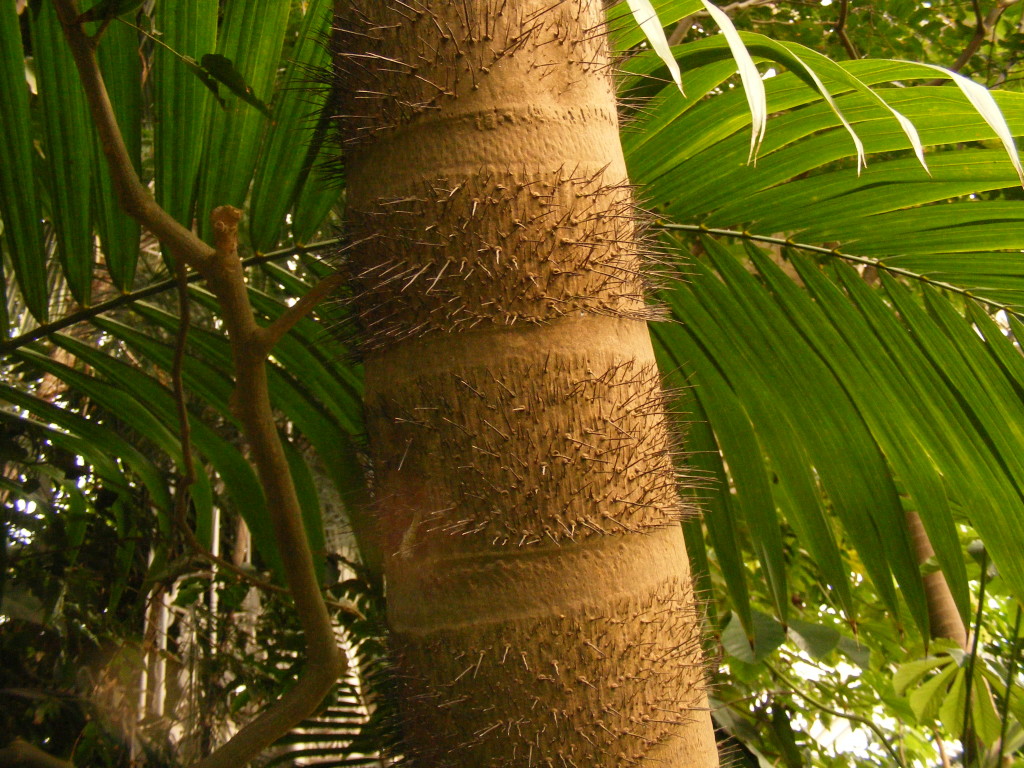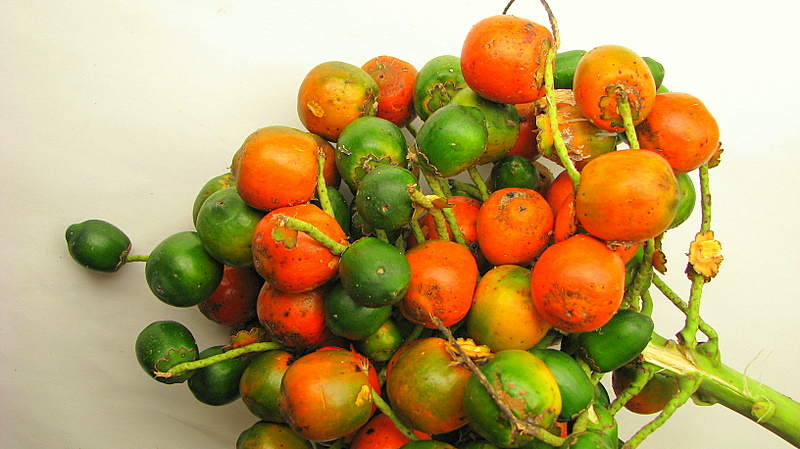
Bactris gasipaes or Peach Palm
The Bactris gasipaes is a palm native to Central and South America. Its wild and domesticated populations can be found in the pacific lowlands of Colombia and Ecuador, in Venezuela and in the area of the Amazon rainforest, especially at the eastern foothills of the Andes. The exact origin of the cultivated peach palm remains open to debate, and is often cultivated for its edible fruits by smallholders in agroforestry systems or, more rarely, in monoculture. It is a long-lived perennial plant which is productive during 50 to 75 years on average.
In addition to its edible fruits, this palm is notable because it is armed with stiff, black spikes that arrange themselves on the stem in circular rows from the base to the top of the tree. There are occasional specimens with only a few spines, but they tend to be plentiful. These trees grow to approximately 60 feet tall, with leaves can grow up to 9 feet long.
The fruits of the Bactris gasipaes are edible and very nutritious, but need to be cooked for 3–5 hours before they are consumed. Indigenous people usually ate the fruit after fermenting it and was a major part of their diet. Today, the fermented fruit is still very popular. The fruits also benefit many animals in the wild. Peach-palms are also cultivated for the heart of palm and the trunk can make valuable timber. Its population has an important genetic diversity leading to numerous fruits colors and qualities.

This plant may also be harvested for heart of palm, and has commercial advantages in being fast growing; the first harvest can be from 18 to 24 months after planting. Brazil has a large domestic market for heart of palm and international demand is growing. It is also an economically important crop in Costa Rica.
There are 18 Bactris gasipaes specimens growing in the Merwin Palm Collection, ranging from juvenile to mature.
Want to “virtually explore” the Merwin Palm Collection? Search through our archive of Palm Facts of the Week, featuring palms hand-planted by W.S Merwin. To search through the Online Merwin Palm Database, visit this link.
If you’re inspired to help The Merwin Conservancy preserve and care for the Merwin Palm Collection into the future, please consider making a tax-deductible donation.
Palm stem spikes photo by Oliver used under a Creative Commons 2.0 License.
Peach palm fruits photo by Alex Popovkin used under a Creative Commons Generic License.

